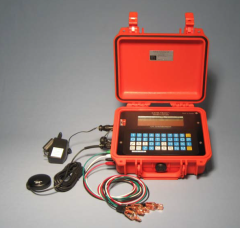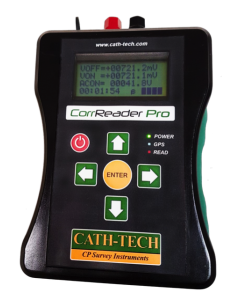Pipe Support System (PS) By Clock Spring Company
 |
 |
The Clock Spring® Pipe Support (PS) System provides effective protection at support or hanger locations. It can be applied quickly and easily. No special tools or training are required.
 Clock Spring® PS consists of a high-strength corrosion resistant fiberglass composite sleeve, a high performance adhesive, and a filler material.
Clock Spring® PS consists of a high-strength corrosion resistant fiberglass composite sleeve, a high performance adhesive, and a filler material.
The fiberglass composite sleeve is uniquely coil-shaped and sized to wrap tightly around pipe diameters from 3/4” to 36” providing two (2) individual layers bonded together resulting in a laminate thickness of approximately 1/8”.
Clock Spring® repairs are fast, economical and easy. Since no cutting or welding is required, there are no risks to the environment, release of greenhouse gases or waste disposal problems.
It’s simply the smartest pipeline repair decision you can make!
 |
Specifications
Sleeve Specifications
|
Use |
Designed as full encirclement wrap to provide wear surface and eliminate crevice corrosion at pipe support interface. May be used on pipe with less than 30% thru-wall loss. |
|
Standard Configuration |
2 layers |
|
Nominal Thickness |
1/8" (3 mm) |
|
Application Temperature |
0°F to 120°F (-18°C to 49°C) |
|
Service Temperature |
-20°F to 130°F (-29°C to 54°C) |
|
Material |
Fiberglass and Polyester Resin |
|
Width |
11.500" ± 0.500" (292 mm ± 13 mm) |
Adhesive Specifications
|
Lap Shear Strength |
> 1200 psi |
|
Shelf Life |
12 months from Date of Manufacture |
Filler Specifications
|
Compressive Strength |
> 8000 psi |
|
Shelf Life |
12 months from Date of Manufacture |
Activator Specifications
|
Shelf Life |
12 months from Date of Manufacture. |
Installation

Clock Spring Pipe Supports typically consist of two concentric wraps of the Clock Spring® composite shell. The shell is in the form of a split sleeve, with a circumference slightly smaller (0.063-inches (1.5 mm) than the pipe being protected. Each shell will fit around the pipe leaving a slight longitudinal gap. Each layer of the Pipe Support will be applied such that the longitudinal seams are staggered from the longitudinal seams of the preceding layer.
- Clean the pipe surface to be protected, removing all scale, loose debris, products of corrosion, and residual pipe coating. The surface should contain a slight anchor pattern as specified in the NACE #3 Surface Finish standard. Sand blasting the pipe surface is recommended. Wire brushing alone is not an acceptable surface preparation. If wire brushing is used to clean the pipe surface, an anchor pattern should be applied using an appropriate sanding disk.
- Carefully inspect the pipe dents, gouges, scrapes and corrosion. Any damaged areas will be evaluated using appropriate NDE techniques.
- The filler material is a Methacrylate adhesive consisting of a paste and an activator. The filler and activator will be mixed according to the pipe temperature. Refer to the chart on the Filler tube for the proper mix ratio. Table 2 below is provided for reference only. Mix the filler and activator for 3 minutes until the mixture is uniform in color and completely mixed.
- Apply filler material to all voids under the repair.
- The adhesive is a Methacrylate consisting of an adhesive and activator. The mix ratio will depend on the application temperature. Refer to the chart on the Adhesive container for the proper mix ratio. Table 1 is provided below for reference only. The mix ratio, ambient air temperature and pipe temperature will all affect the working time available before the adhesive cures.
- Determine the correct mix ratio. Mix adhesive and activator according to standard Clock Spring procedures.
- Liberally apply the mixed adhesive to the filler material and pipe surface to be protected.
- Apply the first concentric sleeve over the filler and adhesive.
- Apply filler material to the longitudinal seam of the first wrap and adhesive to the surface of the first wrap.
- Applying adhesive between each layer, apply subsequent layers of composite sleeves with the longitudinal seam positioned away from the longitudinal seams on the underlying layer.
- Continue the installation process until the entire support is complete and all layers are in place.
- Using the band clamps supplied, tighten the repair onto the pipe. The band clamps are spaced evenly along the repair and tightened from the center out to each end. Clean excess adhesive and filler material.
- When the adhesive has fully cured, remove the clamps and coat the support area with a protective coating.







